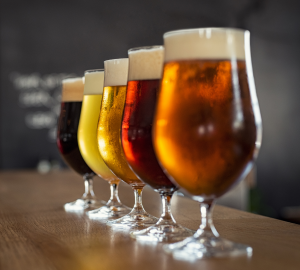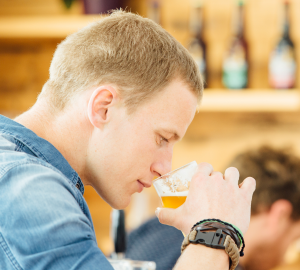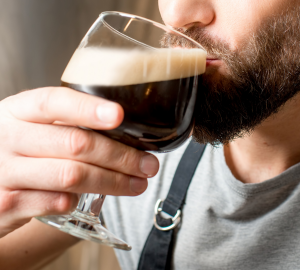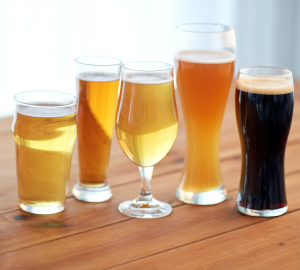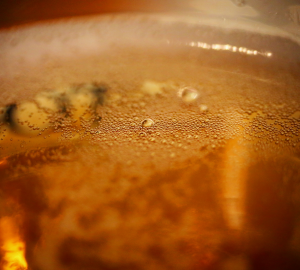How to Drink Beer Like a Pro?
Beer tasting, much like wine tasting, can get a bit of a bad rep but, if you appreciate beer as much as we do, then you damn well want to make sure you’re drinking it correctly to start with!
Whilst we don’t recommend becoming ‘that guy’ and staring wistfully at a pint of bitter in the corner of a Weatherspoons when the pubs reopen, we think that everyone should, at the very least, know the proper way to taste beer. How else are you going to take full advantage of all the wonderful aspects of a well-brewed pint? Plus, with everyone stuck at home at the moment, you can waft your glass in the air all you like, with only the dog and your other half to judge.
Keep reading for our top 5 tips on how to drink beer like a pro.
1) Look at the beer
Whilst this step may require a little willpower to prevent you immediately jumping straight into that sweet glass of delicious nectar, the look of a beer can tell you plenty about the flavours and textures you can expect to find within.
Is it hazy or clear? Does it have a light or thick head? Most importantly, what colour is it?
If you’re ever unsure if a beer is for you, you can learn so much about it merely from assessing its colour profile. The colour of a beer almost always comes from its malt bill. A great way to get the gist of what a beer will taste like based on its colour is to refer back to a simple trick called the toast analogy.
Beers get their colour from malted barley; the malt can be toasted to different levels before brewing giving us a rainbow of colours and flavours to play with. To work out what these colours mean in terms of taste, we can simply compare a beer’s shade to the different stages of toasting a slice of bread.
You can expect to find similar flavours in very pale malts to those in a fresh slice of white bread; light, doughy, subtly sweet. When we begin to toast the malt, we start to caramelise and develop the flavour profile. We can expect to see sweeter, delicate caramelisation flavours such as honey develop in a slightly darker pale malt.
As the colour and the toasting of the malt deepens, richer tones like caramel, pie crust, biscuit and sometimes nuttiness comes out to play. Moving right down the range to dark roasted malts found in stouts and porters, you begin to see complex, smokier flavours with added bitterness and deep charcoal toastiness, just as you would expect to find on a slice of heavily grilled toast.
Simply by looking, you can make a pretty good prediction about a beer before you’ve even taken a sip!
2) Smell it
Half of the taste of a brew is in the aroma, and when you stop to give a beer a good sniff, it will change your entire experience. To begin, pour your beer into your glass (preferably the correct type, although we’ll touch on this later), slowly swirl the beer and go in for a quick one-second sniff at the head of the glass.
By creating a swirling motion, we’re allowing the beer to circulate and, in the process, bursting bubbles, pushing all those delicious aromas up and out. This is the point where you’ll be able to recognise glorious hop aromas such as pine, stone fruits, citrus and bubblegum.
If you’re looking to pinpoint a scent, you can keep repeating the same process, going in for longer sniffs each time. Again, we don’t recommend doing this too blatantly down the local boozer, but if you’re looking to become an Untappd or RateBeer aficionado, then this one is for you!
3) Taste it
At last! Time to drink.
When drinking a beer, you want to recognise the initial, middle and aftertaste it leaves as these are all areas that build with the complexity of the beer.
To taste, you want to let each mouthful cover every part of your tongue and consequential tastebuds. The tongue has six main areas of taste: sweet, bitter, salty, spice, sour and umami (earthy or savoury), and by letting the beer coat the mouth, you’re allowing yourself to pick up on any of these categories.
Another essential thing to look out for is the texture. Is it light and prickly or silky smooth, and creamy? Once you start recognising what exactly it is that you enjoy within a beer, it will make it much easier to experiment with new styles that you might have previously been unsure of.
4) Use the correct glass
Here in the UK, we’re pretty attached to our pint glasses, but beer glasses come in a range of historical styles and shapes, and most beers have a style that’s made just for them!
For example, if you’re drinking a wheat beer, you want to pour it into a tall slim glass to allow it’s signature thick, foamy head to form. If you’re supping a strong beer like double IPA or Belgium style, then a Teku or tulip glass is perfect. The tapered shape of a Teku allows you to swirl the beer whilst concentrating and pushing out the aroma leaving you with more intensity in every sip.
Equally, if you’re drinking a rich Imperial stout, then a goblet or snifter is the one for you. The curved shape forces all that beautiful aroma up and out of the glass, whilst it’s short stubby frame fits perfectly into the cup of your hand, allowing you to gently warm the beer and release its decadent roasted chocolate malt notes.
Top tip: always make sure your glass is super clean as any hidden residue or oiliness can dramatically alter the carbonation and flavours in a brew.
5) Beer and Food Pairing
There’s nothing like matching a great beer with its perfect food pairing to really make you appreciate what it’s all about. The right food can light up a beer and vice versa, so if you want to make the most out of your tipple, then learning a little about flavour pairing is the way to go.
If you’re looking for inspiration, check out some of our beer and food pairing blogs here and here.
Now you’re set! Follow these tips, and you’ll soon be a pro beer drinker.
If you’re looking for some brews to test your skills on, you can find our full range here.

